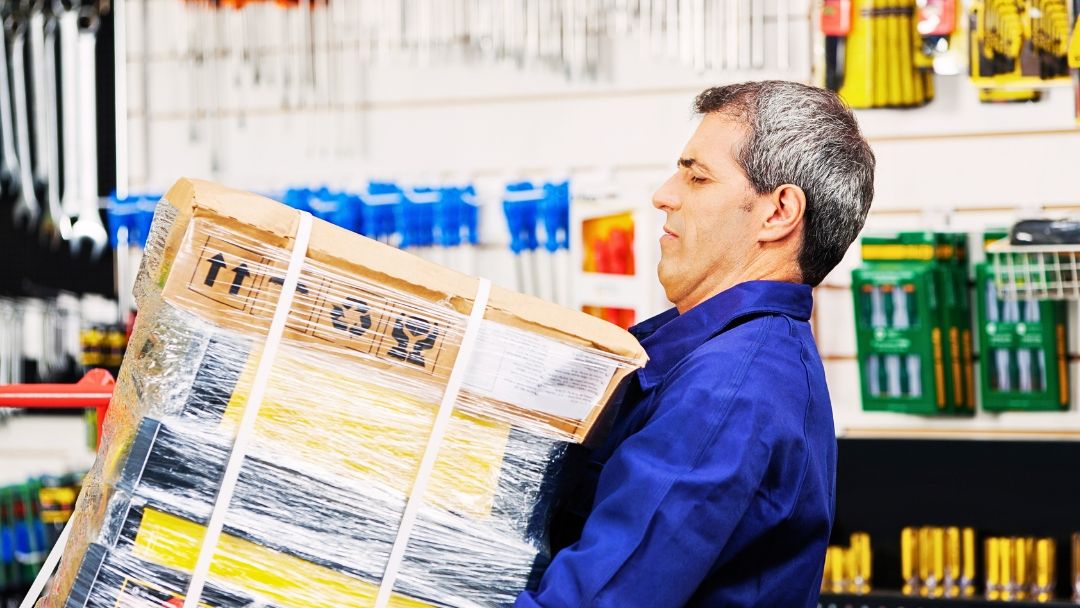Introduction: Why Back Pain Is a Common Challenge for Labour Workers
Back pain is one of the most common health challenges faced by labour workers in construction, warehousing, manufacturing, and public works. Long shifts, heavy lifting, repetitive motions, and awkward postures put ongoing strain on the body. According to Canadian data, back injuries represent a large portion of lost-time claims in physically demanding jobs.
For labour workers, this isn’t just an inconvenience—it’s a threat to both livelihood and long-term health. The back is a vital tool of the trade, and protecting it means protecting your ability to keep working and supporting your family. The good news? With simple strategies—covering ergonomics, stretching, lifting technique, and recovery—workers can cut their risk of back pain and stay strong on the job.
Prevention Strategies: Ergonomics, Posture, and Safe Work Habits
Preventing back pain starts with how the work is set up and how it’s performed. Ergonomics isn’t a fancy buzzword—it’s about making the job fit the worker, not forcing the worker to fit the job. Keep the following in mind:

- Mind Your Posture: Keep your spine as neutral as possible while working. Awkward postures—bending at the waist, twisting, or holding overhead positions—strain muscles and ligaments. Whenever you can, stand tall and keep your shoulders relaxed.
- Arrange Tools and Materials Smartly: Keep frequently used tools and supplies within easy reach to avoid repetitive bending and stretching. Ideally, work surfaces should be around waist height.
- Build in Micro-Breaks: Even two minutes to stretch, walk, or stand tall can relieve pressure and improve circulation.
- Use Ergonomic Aids: Something as simple as adding handholds or grips to containers makes materials easier to carry. Adjusting workstation heights, repositioning loads, or using platforms to reduce excessive bending also reduces strain.
- Create a Culture of Safety: Training and worker involvement are key. When workers are part of the conversation about how tasks are set up and improved, the solutions are more practical and more likely to stick.
Every one of these strategies is a reminder: small changes in how we set up the work can mean fewer injuries and longer, healthier careers.

Stretching and Mobility Tips: Keep Your Back and Core Flexible
Your muscles and joints can take a pounding during physical labour. Stretching keeps them flexible, reduces stiffness, and prepares the body for tough work. The following example stretches, drawn from workplace health resources, are especially effective for tradespeople:
Instead of trying to memorize routines on your own, consider using fitness apps like Nike Training Club (NTC) or StretchIt for free, following trusted stretching guides designed for workers, or even joining a local class. Many of these resources offer short, follow-along videos and simple daily routines you can do before, during, or after work—helping ensure you move correctly and safely.
- Hamstring Stretch: Sit on a solid surface with one leg straight, reach gently toward your toes, and hold. Looser hamstrings reduce pulling on the lower back.
- Hip Flexor Stretch: Kneel with one foot forward, push your hips slightly ahead, and hold. Tight hip flexors are a common source of low back strain.
- Cat-Cow Stretch: On all fours, slowly round your back up (cat) then drop your belly down while lifting your head (cow). This keeps your spine mobile.
- Standing Backbend: Place hands on your hips, squeeze your glutes and lean back gently, and hold. This is a quick way to counteract forward-bending tasks like shovelling or lifting.
Instead of trying to memorize routines on your own, consider using fitness apps like Nike Training Club (NTC) or StretchIt for free, following trusted stretching guides designed for workers, or even joining a local class. Many of these resources offer short, follow-along videos and simple daily routines you can do before, during, or after work—helping ensure you move correctly and safely.

The most important takeaway: make stretching part of your day. Even a few minutes before a shift or during a break can help your body recover from repetitive tasks and heavy lifting. Over time, building flexibility and mobility supports your back health and helps your body handle the work more comfortably.
Safe Lifting Techniques: Protecting Your Spine on the Job
Improper lifting is one of the leading causes of back injuries in construction sites, warehouses, and other labour-intensive settings. Using the right technique protects your spine and prevents injuries.
- Plan the Lift: Check the weight, clear the path, and know where you’re going. Decide if you need a co-worker’s help or equipment like a dolly or hoist.
- Lift With Your Legs, Not Your Back: Bend at the knees and hips, not the waist. Let your leg muscles do the heavy work.
- Keep the Load Close: Hold items close to your body to reduce leverage on the spine.
- Avoid Twisting: Always move your feet instead of twisting your torso.
- Work in Teams: When the load is awkward or too heavy, ask for help. Shared lifting beats shared injuries.
Practical, hands-on training makes these habits second nature. Workplaces that reinforce safe lifting through demonstrations and peer involvement see fewer injuries and stronger safety culture overall.

Recovery and Relief Ideas: Rest, Recovery, and Long-Term Health
Even when you do everything right, long hours of physical labour can still leave your back sore. What matters is how you manage recovery so those aches don’t turn into long-term injuries.
Recovery is not weakness—it’s part of the job. Workers who treat rest and repair as essential end up stronger, safer, and more reliable on site.
- Take Recovery Seriously: Short breaks during shifts and proper rest between them allow muscles and joints to repair.
- Apply Heat or Cold Wisely: Ice packs help with swelling after a strain, while heat relaxes tight muscles at the end of the day.
- Supportive Gear Matters: Proper footwear cushions impact and supports alignment. In some cases, a health professional may recommend a back support belt for short-term use.
- Strengthen Your Core Off the Job: Building stronger abdominal and back muscles through simple exercises like planks or bridges provides better support during demanding work.
- Sleep Well: Quality sleep is where the body does its best repair work. Don’t underestimate its importance for back health.
Recovery is not weakness—it’s part of the job. Workers who treat rest and repair as essential end up stronger, safer, and more reliable on site.

Conclusion: Make Back Health Part of Job Safety
Back pain is one of the most preventable workplace injuries, yet it continues to sideline thousands of workers every year. For labourers in construction, warehousing, manufacturing, and public works, the lesson is clear: protecting your back isn’t extra—it’s essential.
Your back is your livelihood. By making back health part of everyday job safety, you’re investing in your ability to keep working, earning, and living without pain. Every small change adds up—whether it’s grabbing a container with built-in grips, taking two minutes to stretch, or asking a co-worker for help with a heavy lift.
The strongest crews are the ones that protect each other, and that starts with protecting your back.
- Set up the job to fit your body
- Stretch and stay mobile
- Lift smart, not just strong
- Take recovery as seriously as the work itself
- Get involved in shaping ergonomic solutions at your workplace
Your back is your livelihood. By making back health part of everyday job safety, you’re investing in your ability to keep working, earning, and living without pain. Every small change adds up—whether it’s grabbing a container with built-in grips, taking two minutes to stretch, or asking a co-worker for help with a heavy lift.
The strongest crews are the ones that protect each other, and that starts with protecting your back.
Sources
1. Canadian Centre for Occupational Health and Safety (CCOHS). "Ergonomics: Back Injury Prevention." CCHOS, 2023, https://www.ccohs.ca/oshanswers/ergonomics/inj_prev.html.
Accessed 15 July 2025.
2. Employment and Social Development Canada. “Protect Your Back! Occupational Health and Safety.” Government of Canada, 9 Sept. 2022, https://www.canada.ca/en/employment-social-development/services/health-safety/reports/back.html.
Accessed 15 July 2025.
3. "Keeping Workers Safe: Ergonomics Tips for Manual Material Handling Essentials." Disk.com, 2024, https://disk.com/resources/keeping-workers-safe-ergonomics-tips-for-manual-material-handling-essentials.
Accessed 16 July 2025.
4. Pliability Team. "8 Stretches Every Warehouse Worker Should Do." Pliability, 2023. https://pliability.com/stories/stretches-for-warehouse-workers.
Accessed 16 July 2025.
5. "Safe Back Lifting Techniques." Texas Department of Insurance, Division of Workers’ Compensation, https://www.tdi.texas.gov/pubs/videoresource/stpbkinj.pdf.
Accessed 17 July 2025.
6. Wang, Mark. “Tips for Dealing with Back Pain at Work.” Sciatica.com, 28 Jan. 2022, https://www.sciatica.com/blog/tips-for-dealing-with-back-pain-at-work.
Accessed 17 July 2025.
7. Broderick, Mary Gay. “Is the Job You Do Causing Back Pain? Be Proactive and Stay out of the Doctor’s Office.” UCHealth Today, 2 Feb. 2023, https://www.uchealth.org/today/prevent-and-help-back-pain-at-work.
Accessed 18 July 2025.
